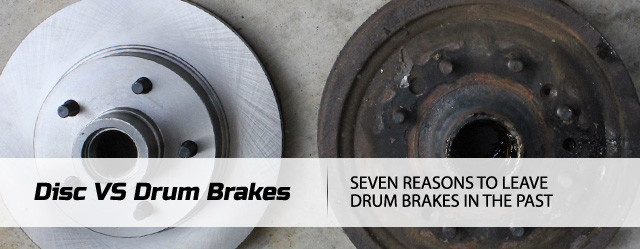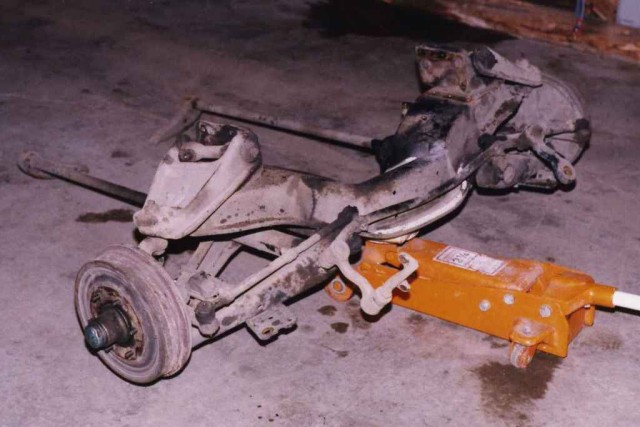Before we get into the reasons you need to switch from drum to disc brakes on any vehicle, we wanted to present the back story to this study on brake theory. Anyone that has been following our Project Geronimo truck build knows that we have stayed true to the overall goal of the project: to build a safe and dependable vehicle that has a unique and desirable look, on a shoestring budget. To this point, every addition has been made with either safety or dependability in mind. The truck has to be a daily driver in order to take full benefit of the overall plan.
Make sure you can stop before you start adding any performance upgrades. – Mark Chichester Master Power Brakes
What Does It Cost, And Is It Worth The Price?
Pricing for front disc brake upgrades from Master Power Brakes ranges from around $500 to $1,200, depending on what upgrades you want in the kit. First things first: is it worth the upgrade? Most decidedly, yes. Our old three-quarter ton truck with four-wheel drum brakes was driving on the California freeways at speed, surrounded by lighter vehicles sporting four-wheel disc brakes that could stop on a dime. If we wanted to stop at highway speeds, we’d have to start planning for the stop yesterday.
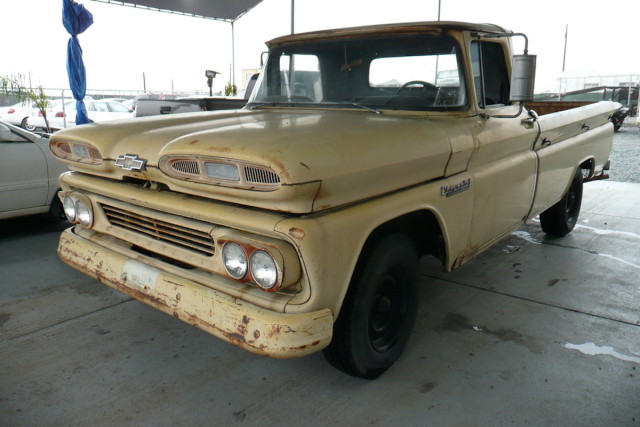
Our C20 was considered heavy duty but very nimble when it was released in 1960. GM engineers designed this truck to have a more “car-like” feel. Times change, and technology changes with it. Driving this beast on the highway now was like taking your life into your own hands. Battleships could stop quicker. Something had to be done.
Without a doubt, there was a serious safety issue, and we were not going to place ourselves, our family, or anyone else’s family at risk to avoid spending $1,000. Chances are, we would be spending far more than that in hospital bills if we didn’t upgrade the brakes. The choice between improving the brakes or parking the truck permanently was an easy one. We were going to drive our truck!
Master Power Brakes’ Mark Chichester seconded our project truck’s progression. “You guys are doing this build in the right sequence,” he affirmed. “Make sure you can stop before you start adding any performance upgrades.”
What We Started With
The early Chevrolet C/K-series trucks were all equipped with drum brakes until 1971, when the light-duty trucks finally received disc brakes on the front wheels. Our project is the earliest of the C series – a first year, first generation model. Like all of the first-generation C10 and C20 trucks, the brake system and hydraulic clutch were supported by a tandem master cylinder that supplied the clutch slave and all four brake slave cylinders from one reservoir.
The Stock Brake System
Hydraulic manual brakes
11X2.75 Asbestos lined brake shoes, front and rear
Cast alloy, iron rim with pressed steel web drums
Brake distribution: 49 percent front/51 percent rear
Slave cylinder: 1.25-inch diameter front and rear
Master cylinder: 1.125-inch diameter
Capacity: 1.16 pints
Piston travel: 1.50-inch available (1.15-inch used)
Pedal ratio: 6.85-inches
Pedal travel: 8.00-inches
What We Ended Up With In The Front
- Calipers with 2-15/16-inch pistons with brake pads
- 12-inch vented rotors
- Stock ride height spindles with bearings and hardware
- New front brake hoses
- 8-inch dual diaphragm power brake booster
- Dual reservoir master cylinder with 1-inch bore
- Combination valve (metering & proportioning)
- 3/16-inch stainless steel hard lines for front brakes
- 1/4-inch stainless steel hard lines for rear brakes
- Clutch master cylinder relocation kit
Before we dive into the reasons why drum brakes should be replaced with disc brakes, there are a couple of areas where drum brakes do actually have a slight advantage, and we want to address those. Most drum brake systems have a smaller master cylinder, because it is easier to apply a wedge than to clamp a moving disc. Drum brakes also allow for easier mounting of a parking brake, which makes them better suited for rear wheel use. Lastly, drum brakes leave less brake dust on your wheels.
Finally, here are the seven reasons why a front disc-brake conversion kit should be considered for every vintage vehicle with drum brakes all-around:
Reason #1: Consistency
We went right to the heart of the matter and asked Chichester, What is the truth about brakes? “From the simple standpoint of how a disc brake operates versus how a drum brake operates, a drum brake operates better,” said Chichester. “From a mechanical standpoint, it is better to put a wedge in something than it is to squeeze something to get it to stop.”
If that were the case, why isn’t every vehicle fitted with drum brakes from the factory? “Drum brakes can’t do it consistently,” Chichester added. “That reason, and the economic value, are the two reasons that drum brakes went away as the primary stopping device. When it comes to the front brakes, there is just no way around it, discs are going to work better on a consistency basis.”
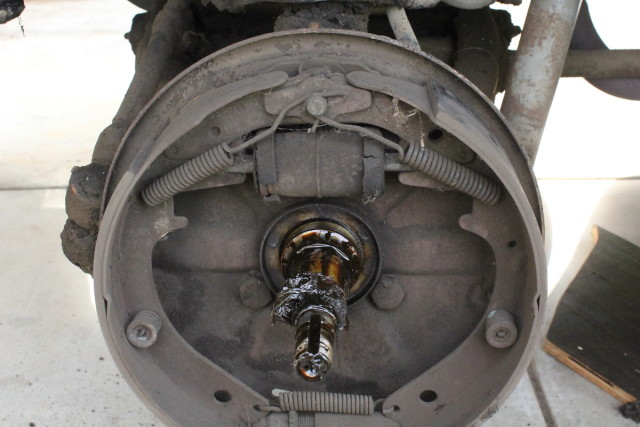
Despite what many drum brake fans say, there are more components in a drum brake setup than a disc brake assembly. Drum brakes rely on a series of springs to work correctly.
Reason #2: Less Parts
Drum brake fans claim that drum brakes have less parts. Most of this stems from the lack of bracketry needed to mount drum brakes versus disc brakes. Once you pull the drum off however, there are a series of springs and adjusters that hold the brake shoes in place. That means far more components than a disc brake system.
Chichester countered the drum brake claim, “Drum brakes have way more parts than disc brakes. There are sets of springs in there to hold the brake shoes in place. What happens when you keep using springs? They weaken. That is what a drum brake system is made of, a bunch of springs. You can’t tell me that over a long period of time that there is any consistency to that at all.”
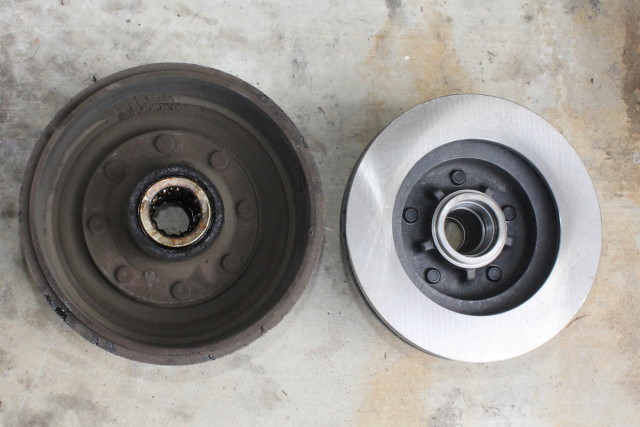
Drum brakes contain all of the brake dust inside the drum. There is no place for the heat or dust to escape. You can see the residual dust on the top side of the drum in this photo. Disc brakes have no place to keep the dust contained, and therefore, remain cleaner.
Reason #3: Drum Brakes Never Get Clean
One of the bigger selling points for drum brakes in the 1960s was the old salesman speak: “Drum brakes never get wet.” While it sounded good, and many customers believed that statement, Chichester set us straight. “Drum brakes never get wet, which means they never get clean,” he advises. “ There is never anything to get rid of the gunk, or the grit or the grime that is in the drums. The biggest drawback is that drum brake shoes can’t get cooled like disc brakes can. A brake pulls air from the center of the rotor and sends it outward. If you have a backing plate on there, it can’t get air adequately.”
Reason #4: The Weight Difference
Brakes drums weigh a lot. If you are lucky enough to own a three-quarter ton 1960 Chevrolet pickup, they weigh even more. A noticeable difference if you happen to be the one removing the brake drums. The replacement front disc brake kit weighed about 142 pounds, including spindles. We know that because that was the weight listed on the shipping form.
It is not the physical weight that is the real concern in this scenario. “What the big difference to me is, when you are spinning that drum brake, you are spinning something that is fifty pounds with all the weight to the outside,” said Chichester. “So your rotational force is significantly higher than a rotor brake, which has all it’s weight more toward the center of rotation. So your leverage weight, the weight that is acting upon the brakes and the stopping of the vehicle is generating that much more heat trying to get it to stop.”
Reason #5: Better Heat Control
We know from reason three that drum brakes have an inherent heating problem. Chichester explained how heat affects the braking process. “Let’s look at how a brake system operates,” he started. “It takes energy and converts it to heat. As it continues to work, it dissipates that heat. That is what a brake rotor does. It pulls air in, pulls it up through the rotor vanes, and starts to dissipate the heat. If you lool at a drum brake, it traps that heat inside and it cannot dissipate.”
This trapped heat within drum brakes leads to the inconsistency that Chichester detailed earlier. Disc brakes operate in cooler conditions, and have better overall stopping power because they are less susceptible to surface warpage or brake fade due to temperature.
Brake fade happens when the braking surfaces reach a saturation point, and can not absorb any more heat. This saturation point happens quicker with drum brakes because of the lack of cooling as described in reason three.
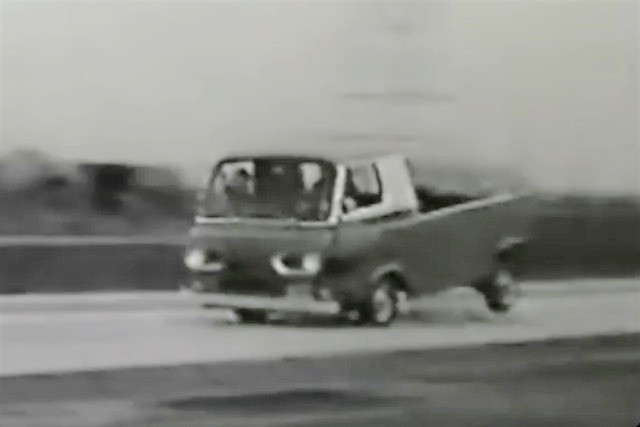
As seen in this image taken from a GM advertising video showing how poorly the Ford Econoline trucks stopped compared to the Corvair pickup trucks, weight transfer from the rear to the front of the vehicle is a big deal. Front brakes have to be able to handle this transfer without lifting the rear wheels off the ground.
Reason #6: Weight Shift Under Braking
Many experts say that a vehicle’s front brakes are responsible for up to 75 percent of the total braking force during heavy or hard braking. Because of this, front discs tend to be larger and thicker to better handle the increased friction. As the vehicle stops, weight is transferred from the rear of the vehicle to the front, this is why a larger front rotor with more clamping power is required.
This load transfer from rear to front is better handled by disc brakes, making this style braking system perfect for the front wheels. The lightening load of the rear suspension makes a drum brake type braking system better suited for the rear, where less clamping force is required and less friction is generated.
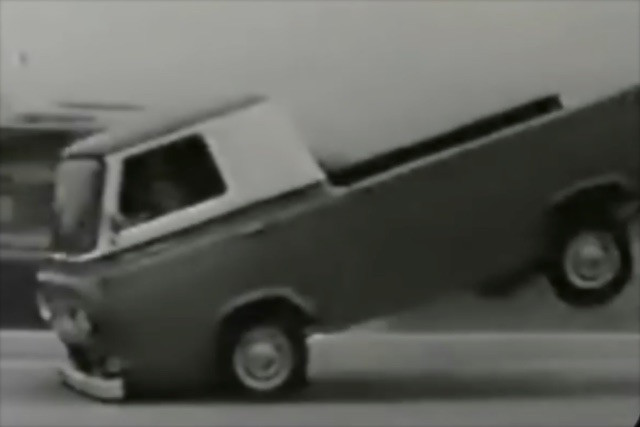
We added this photo from the same GM advertisement video, primarily because it is funny, but also to show that the front and rear brakes have to work together. Disc brake conversions from Master Power Brakes include a combination valve that allows the rear brakes to start braking earlier, when the weight and traction is there, then allow the front brakes to begin braking when the weight shift starts to take place. It is momentary, but is an advantage in braking that drum brakes do not have.
Chichester points out that modern drum brakes do have better performance than drum brakes from earlier periods. “This is why some of our daily driver, disc-drum configuration are less expensive and provides ample stopping power,” he says. That means that when talking about an older classic car, a front disc brake conversion kit may be perfect for these daily driver applications.
“If you are an aggressive driver, or your car sees some track use, disc brake technology for all four wheels might be a good option,” he added. “A complete disc brake upgrade kit comes with a higher pricetag, but the improved performance will justify the additional cost.”
Reason #7: Cost Of Replacement Parts
For many vehicles with front drum brakes, it has been 30 years since these parts were stocked in your local auto parts stores. There is a very good chance that you will have to wait a couple of days for the Pep Boys down the street to get these OE brake drums or brake shoes from the warehouse. The simple rule of economics is supply and demand. While your demand is high and right now, the supply will certainly be a lot lower. Expect to pay a higher cost for these rare items.

It’s not just the cost of the parts, but the difficulty in finding 8-lug drums for an early 1960s vehicle that makes routine replacement difficult.
We did a quick price check, and discovered that a replacement brake drum for our project truck would cost $55.72 from a specialty vintage-truck parts store, plus another couple sawbucks for shipping if we wanted it within three days. That is a total of $75.72 each. The brake shoes were $57.44 with shipping. Good luck if you are tying to find the 8-lug drums for the C20 truck. If you have done the Master Power Brakes front disc brake conversion, the cost for OE-style rotors off the shelf is $54.99, and the pads are around $60.00 at your local parts store. They are almost certainly stocked in most auto parts stores, which is good news if you are on a trip and need to replace any of these parts in an emergency. Chichester assured us that their kits are made so that readily available OE-style rotors and brake pads would easily work as replacement consumable parts.
Final Word
There is a lot to consider when making significant changes to any vintage car, and this is especially the case when you are dealing with important safety systems like brakes. Chichester volunteered to assist enthusiasts that have questions or need to discuss the options for their particular vintage vehicles. “They can give us a call at (800) 472-4181 or drop us a line and we’ll be glad to help.”
For more information on Master Power Brakes or their line of products, please visit them online at www.mpbrakes.com



